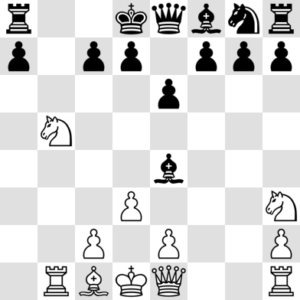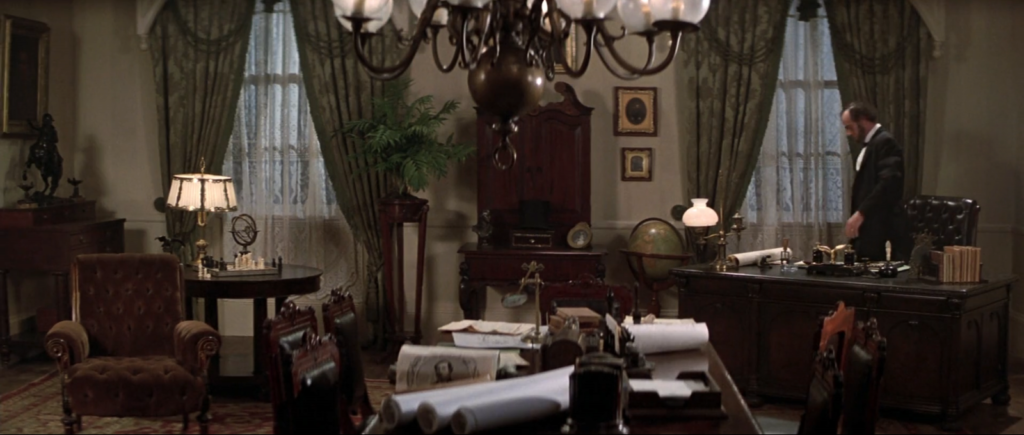For a brief period of time a the very end of the eighties and in the beginning of the nineties, Bill & Ted were big. Very, very big. The highly popular first movie, which we talk about more in a bit, appeared in 1989 and sparked two television series, a 1991 sequel and a second sequel this very year, almost three decades after the original. That original one is about two high school kids who are about to flunk their history class. As this would irreparably damage the spacetime-continuum, they get help from time travellers to collect some significant figures from all through history.
One of those figures is Abraham Lincoln. They go to pick him up at his office in the white house where, great man that he is, a chess board figures prominently.
It is not clear who was playing here of whether perhaps Lincoln was analysing something. Nor is it very clear what the position on the board is, because the director seems more interested in time travel than in chess. What is clear, though, is that a1 is a white square. I want to moan about that, but I’m not sure I can.1 Lincoln lived a good while ago, and the convention of h1 being white might not have been universally adopted by then. The same argument can be made for the fact that kings and queens seem to have swapped places.
My best reconstruction is really bad and this:2
 Most of this is conjecture, but the piece on d1 is definitely taller than the one on e1, which almost certainly makes it the king. This, too, is something I want to moan about, but again I can’t.3 In Lincoln’s time, it was not unusual for black to start and it would then also not be illogical for him to have the king’s side on his right.
Most of this is conjecture, but the piece on d1 is definitely taller than the one on e1, which almost certainly makes it the king. This, too, is something I want to moan about, but again I can’t.3 In Lincoln’s time, it was not unusual for black to start and it would then also not be illogical for him to have the king’s side on his right.
Realism: 1/5 There are things in the movie which are less plausible, but not that many.
Probable winner: The only one who profits form this little exercise is John Wilkes Booth, who can now claim he was acting on Caïssa’s behalf.
1. [Well, obviously I can, but it wouldn’t be justified.] ↩
2. [Bill and Ted’s excellent diagram maker.] ↩
3. [Again the same caveat applies.] ↩
